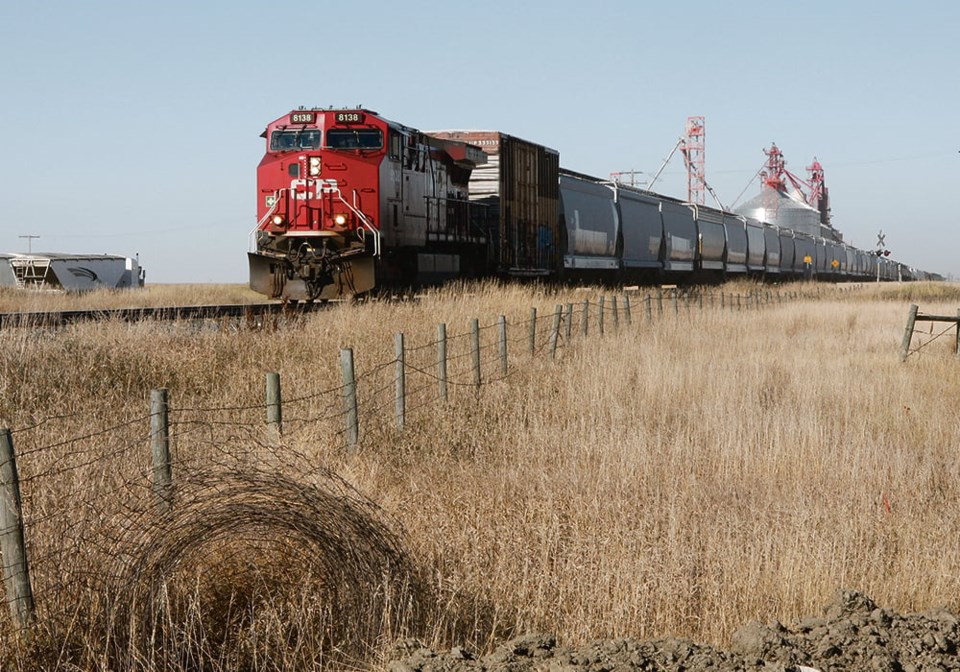WESTERN PRODUCER — How’s your soil moisture?
What happens if most farmers across Western Canada get decent weather this summer? How big a crop could we get?
Those questions need to be pondered now that most farmers across the West have received good moisture and seem off to a great start.
We haven’t needed to worry about the second question for years, with rotten weather crippling the production of farms on about half of our giant region and patches of problems in the rest.
But we’ve seen hints of just how much we could grow if things were OK for just one summer.
In 2023, Manitoba canola yields of more than 60 bushels per acre were nothing special. AAC Brandon has seen wheat yields surge, even in parts of the western drought region.
This is Prairie farming. You can’t count on the weather. That means you can’t count on droughts continuing, as familiar as we have become with them in the last half-decade.
Whenever I’m at an ag event, I ask farmers the two questions at the top of this column. In recent weeks almost all farmers I’ve spoken with have told me they have adequate or really good moisture levels, including reserves. A few have had too much. Only one or two are still too dry.
When I ask the second question, most farmers seem taken aback by the idea. They’re not offended, but it seems like most haven’t allowed themselves to hope or think about a Western Canada that receives generally good weather for a growing season.
It’d be terrific to see all farmers get a good crop again. It’s great for individual farmers and is what pays the bills and covers the losses from bad years.
However, if almost everybody gets a great crop, how enormously big could that western Canadian crop be?
Crop genetics haven’t stood still in the years since the droughts began hitting. We must assume the varieties that have produced OK yields in challenging times will produce significantly more if they get everything they need.
Machinery and technology have advanced over the same period, allowing for far more precise farming management.
And farmers have advanced their skills too, doubling down on the never-ending challenge of staying one step of competency ahead of the next weather challenge.
Look at what happened in 2013 when we got good conditions across Western Canada. Anybody recall a bin-busting 75 million tonne crop that was about a 40 per cent increase on the 2012 crop?
ADVERTISEMENT
That was great for individual farmers, but It became a challenge for the Canadian grain handling system, especially when the awful winter of 2013-14 struck. A big crop plus a brutally cold winter led to a grain transportation crisis that most farmers recall with pain.
It didn’t seem fair.
Farmers had managed to pull off an awesome crop, and they couldn’t get it to market when the best prices were available.
The weather was a problem during the winter, but the gigantic size of the crop exacerbated the situation.
In farm country, people don’t like to speculate about the problems that might arise if farmers get lucky with the weather. It seems like inviting a hex, or an immodest assumption of future good fortune.
It’s counting chickens before they hatch.
However, when one’s breeding chickens, it’s prudent to ensure that there is enough barn space for the chicks.
Are the railways gearing up for a mega-haul, or have they become comfortable assuming they won’t be facing that?
Port capacity would be pushed by a flood of crop that lasts months. That might not be something today’s terminal staff have much experience with.
Farmers across about half the Prairies haven’t had to worry about bin space for years now. A farmer I chatted with last week in Dauphin, Man., recalled scrambling to create temporary grain storage for the 2013 harvest, with everybody everywhere out of grain bags and other emergency supplies.
It sounds like a good problem to have, but that winter of 2013-14 didn’t seem like the best of times. It’s definitely a better situation than not having enough crop, but it still wasn’t a happy time.
Now is probably a good moment for the grain industry to start thinking about what it will do if a good crop comes in. It’s something we haven’t seen for years, but what has seemed unthinkable is suddenly thinkable again.




